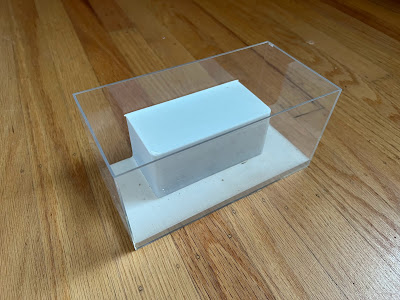Species Profile: Camponotus maritimus 6/20/2020
One of my favorite genera to keep is Camponotus, they are large and relatively simple to care for, making them great starter ants. One of my favorite local Camponotus species in the California Bay Area is Camponotus maritimus.
This species of ant is a tad bit harder than other Camponotus species that I have kept, as their queens are rather skittish. However, given the right care, they are hardy ants and are a joy to keep. In this post, I will cover this species' general details, as well as some tips and information or rearing them. I hope this is helpful!
Species Name: Camponotus maritimus
Difficulty: Beginner-intermediate
California Distribution:
Found throughout California, I have typically found them in low-elevation foothills and forests.
Species Description:
This species is quite similar in appearance to Camponotus vicinus. However, they typically have stubbier legs and are noticeably shinier. Queens are typically black in color, with their undersides sometimes being lighter. Queens are medium-sized for Camponotus, measuring between 11-14mm on average. I have observed that the queens have lighter hues of color on their legs, ranging from a dark orange to purple.
Workers are quite variable in appearance. This species is polymorphic, which means they produce different sized workers. The minor workers usually have a dark reddish-brown coloration on their thorax, and a nearly black head and thorax. The majors and median sized workers are somewhat lighter in color, although the overall color distribution remains the same. Occasionally I have seen orange and red hues in the larger workers, although I am not sure if these workers are anomalies or a normal color form.
This species is a ground-nesting Camponotus species, and in my observation, colonies are abundant in localities where the species is present. However, I have found this species to be significantly less abundant in distribution than their close relative Camponotus vicinus. The colonies can have multiple nests entrances, and colonies can contain upwards of multiple hundreds of workers.
Nuptial Flights:
In my experience with this species, they will have nuptial flights for the first 1-2 weeks of spring where the temperatures surpass 80F. The largest flights occur when temperatures are at or above 84F in my experience. They often fly at the same time as other Camponotus species in a locality.
General Care:
These ants are quite easy to care for once founding is over, however the queens are skittish when first caught. If disturbed too much during the founding stage, these queens will sometimes eat their young. I would recommend leaving newly caught queens in a dark, warm (75-80F) place for 4 weeks. If workers are not present yet, continue weekly checkups until workers are present. Lower temperatures will increase the time to workers, whereas higher temperatures lead to faster egg to worker time.'
Past the founding stage, I recommend feeding them 1-3 times a week. They are fairly easy to feed and will accept most forms of protein and sugar. I personally cycle through mealworms, crickets, and fruit flies for protein and hummingbird nectar and sugar water for sugar. Be sure to provide both sugar and protein during each feeding, and ensure that any food given can be consumed completely within 48 hours to prevent molding complications.
Hibernation:
This species does best when hibernated at or slightly below room temperature for 3-4 months. I personally keep mine at 65F between November and February, and this seems to work for others who raise this species as well. Without proper hibernation, egg production may come to a stop, which is why it is essential to hibernate this species.
Tips:
Camponotus maritimus is a rewarding species to keep once the founding stage has passed. In order to maximize your chances of success with queens of this species, be sure not to disturb them with vibrations or light for 6 weeks during the founding process. This ensures that the queen is able to produce her first brood without disturbances. After the eggs develop into larvae, and the larvae pupate, I have observed that the queens calm down a lot. Typically at temperatures between 75-80F, larvae or pupae are present at 4 weeks and beyond. For this reason, checking weekly on queens after 4 weeks has yielded much more success for me compared to checking every week from the date of capture.




Comments
Post a Comment